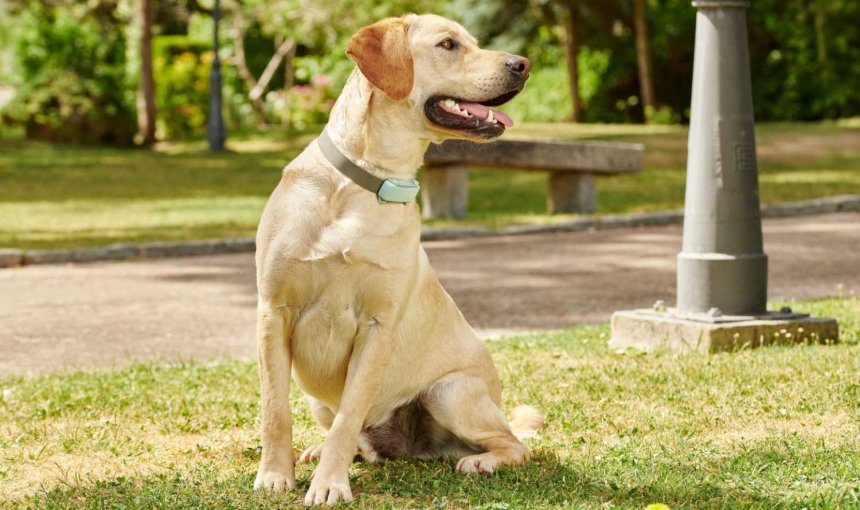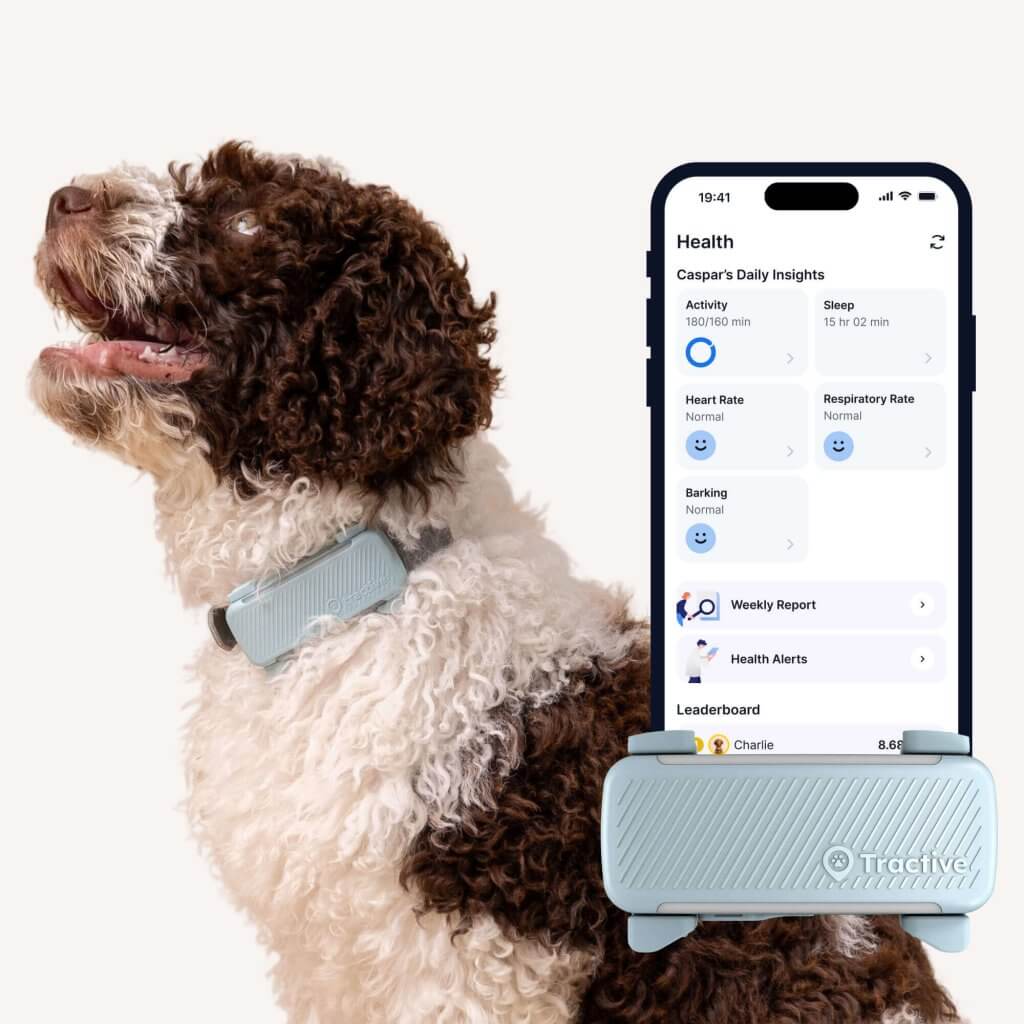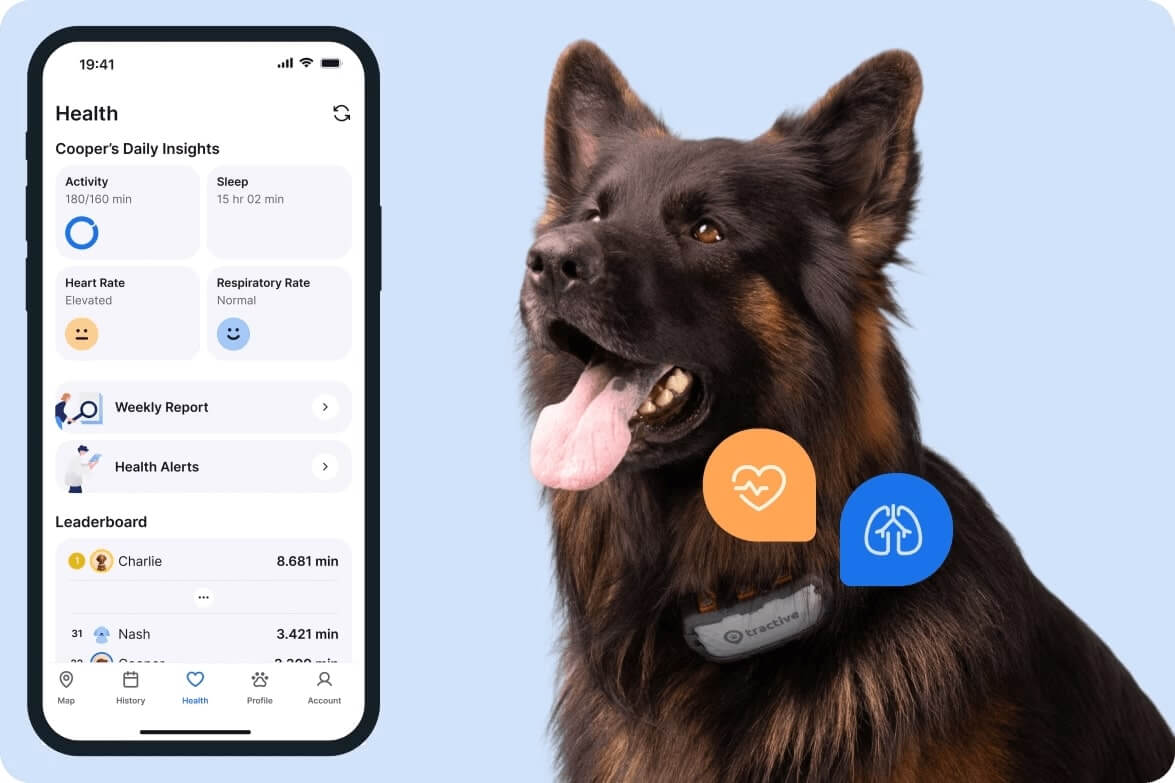 Approved by Dr. Dwight Alleyne, DVM
Approved by Dr. Dwight Alleyne, DVM Why is My Dog Panting So Much? And How Much Is Too Much?
From stress to pain to the heat to a more serious medical condition, you're best off not ignoring any extra huffing and puffing from your dog! Here are the concerning signs to watch for & steps you can take.

A panting dog is a happy, well-exercised dog…right? If you’ve landed here wondering, why is my dog panting so much?, we do get it. In this post, we’re going to walk you through some of the most common reasons why dogs pant – from the everyday to the more serious causes, and how you can monitor your dog’s vital signs, like their breathing rate.
Key Takeaways
Dogs naturally pant to regulate body temperature, especially after exercise or in warm environments. However, excessive or unexplained panting can indicate an underlying issue.
What you can do: Provide fresh water, a cool resting spot, and limit strenuous activity in hot weather. If you suspect medical causes, consult your veterinarian to rule out serious conditions.
The Tractive smart dog tracker includes vital signs monitoring that can help detect issues like excessive panting early, so you can take action right away.

Always know your buddy is healthy & safe
Read moreWhy is my dog panting?
Panting plays an important role in your dog’s health. It firstly helps them release heat and keep their body temperature stable – especially in the hotter months. Because as it turns out, dogs don’t sweat all over their bodies the way us humans do. Rather, they release heat through their tongues by panting. So it’s 100% normal if your dog pants a bit extra:
- After a long walk,
- After some vigorous training or playtime in your backyard,
- And when it’s warm outdoors
In fact, dogs might even pant out of excitement – like when you’ve whipped out their collar and leash and have just announced it’s time for walkies. (Or brought out their food bowls and their favorite pack of kibble.)
💡The Tractive smart dog tracker can help you pick up on a change in your dog’s breathing rate – much before it has a chance to worsen. (If it’s an underlying health issue that’s causing it.)

Get health alerts for your dog
Our pups can’t always tell us if something’s wrong. But if their tracker detects unusual changes in their routine, you’ll get an alert, helping you catch potential issues early.
Why is my dog panting…for no reason?
Now if it isn’t hot outdoors and you two haven’t just come back from a walk – you might be wondering, why is my dog panting while resting? Or just out of nowhere? Which is where any extra huffing and puffing may be a cause for concern. Because it might signal that your dog is:
Overheating
When it’s hot or humid both indoors and outdoors, your dog may pant extra because they’re overheating. But some dog breeds might be more vulnerable to overheating than others. For example, Brachycephalic dogs, like Pugs, Bulldogs, Boxers, and Mastiffs tend to have difficulties breathing because of their face and skull shape – both at rest and while out on walks. Which also puts them more at risk for overheating.
💡 What you can do
- Make sure your dog has plenty of fresh, cool water and a shaded spot to rest in throughout the day.
- Consider early morning or late evening walks to avoid peak sun hours.
- Likewise, try and avoid asphalt pavements that can end up feeling like a frying pan under your buddy’s paws.
- Watch out for other concerning signs like heavy drooling, restless pacing, red gums, or if they seem weak or disoriented. All of these signs may signal heat stroke, which is a potentially fatal condition if left untreated.
Under stress or anxiety
Every dog finds different situations “scary” – like riding your car, going to unfamiliar places, or just heading to the vet. So keep an eye out for WHEN your buddy tends to start panting out of nowhere. It’s an important clue that they might be feeling stressed, anxious, or scared.
Which could include triggers like:
- A big change in routine, like moving to a new house, city, or even country,
- Traveling, including riding in cars and airplanes,
- A new housemate – like a baby or a new pet,
- Being left home alone while you head to work – especially if they already have separation anxiety
- Loud noises, including thunder, fireworks, or even the crying baby next door
- A change in diet, outdoor privileges, or anything else they’re used to
💡 What you can do
Keep an eye out for the signs of anxiety in dogs. Including shaking, pacing, and even hiding – all of which can signal severe anxiety or even a panic attack. In the short term, comforting your dog, getting back to a predictable routine, and setting up a calming home environment can help. Think toys, a blanket or sweater with your scent, and some soft music (or white noise) to block out any “scary” sounds outdoors. A quiet space to safely retreat and hide can help your dog feel less overwhelmed. Just make sure it’s somewhere they can enter and leave easily. (And not some risky or hard-to-escape spot, like under your car or in a washer or dryer!)
Finally, your vet can also advise you whether your dog could benefit from special training, including behavior therapy, or anti-anxiety medication.
Eaten something weird
(Most) dogs aren’t picky eaters. Their repertoire includes table scraps, leftovers from unattended plates, small toys, and even poop. (Their own – as well as other animals’!) Which means they might pant extra if they’ve actually swallowed something potentially toxic to dogs, including:
- Raisins,
- Chocolate,
- Antifreeze,
- Rat poison,
- Or even common gardening items, like snail bait
All of which you can find around your kitchen, cabinets, counters, garages, bathrooms, and even your own backyard. So it’s a good idea to seal off these areas with baby gates or just never let your dog into them unsupervised.
Experiencing another medical condition
Sadly, a whole range of serious health conditions can cause your dog to pant more than usual. Including:
- Cushing’s disease
Which is a hormonal condition affecting your dog’s adrenal glands. It may turn up as excessive panting – especially at night or when resting. - Respiratory problems
Including asthma, infections, allergies, and sleep apnea can all cause your dog to pant more than usual. Watch out if your dog seems to be breathing weirdly – wheezing, struggling to breathe, or coughing while asleep. - Heart problems
Especially in older dogs that may struggle to get enough oxygen to their bloodstream. Leading to excessive panting, even when resting or at night. Watch out for any coughing, lethargy, or swelling in their bellies.
Read more: Your Dog Heart Rate Guide: What’s Normal & What’s Not
In pain or discomfort
Scrolled down here wondering, why is my dog panting at night? Sadly, another reason behind excessive panting in dogs – especially around nighttime – could be that they’re struggling with pain or something uncomfortable in their environment.
This might turn up as your dog:
- Restless around their usual bedtimes,
- Struggling to lie down or get comfortable,
- Shaking in their sleep,
In many cases, it could be something in their environment making it difficult for them to relax and get a good night’s rest. Like, for example, a too-warm room or even dust near their sleeping area, which could trigger an allergic reaction. In other cases, dogs experiencing painful mobility-affecting conditions like arthritis may pant more than usual at night as they try and manage their discomfort.1 Else, it could signal them trying to tough out an illness or injury.
If you have a senior dog at home, watch out for signs like your dog waking up more than usual – or seeming groggy and out of it throughout the day. A change in a senior dog’s sleep cycles may signal the start of canine cognitive decline, including conditions like dementia.
💡 What you can do
- Keep your dog’s sleeping area cool and clean.
- Watch out for any sneezing or coughing, which could signal an allergic reaction.
- Your dog’s activity levels are a window to their overall health – which is why vet’s recommend you:
“Keep track of your dog’s energy levels, especially how long they are able to walk.
If you notice significant declines, it could be a sign of pain, heart disease, or other illness.”
– VCA Animal Hospitals2
When you should drop by your vet
While you know your dog best- if something feels off, you’re best off heading to your vet. Take a video to show them in case your dog’s panting occurs in fits and bursts. If you notice any of these signs, it may count as a medical emergency:
- Sudden, excessive panting – seemingly out of nowhere (and when any environmental culprits aren’t the cause)
- Excessive twitching or trembling in sleep, which may indicate a seizure,
- Vomiting,
- Diarrhea,
- Excessive drooling,
- Red gums,
- Labored breathing,
- Limping or difficulties getting around,
- A pot-bellied appearance,
- A loss of appetite,
- Lethargy,
- Hair loss,
- Frequent peeing,
- A tongue that seems blue, purple, or gray
So keep your vet’s number on speed dial – and drop by for a checkup right away.
What to expect at your vet’s
Your vet will most likely begin with a physical examination, checking your dog for any injuries, visible sores or infections, or what might be causing any respiratory trouble. They might recommend diagnostic tests including blood tests, X-rays, or an ultrasound to rule out heart problems or other internal issues.
Based on what’s causing your dog’s panting, your vet might prescribe:
- Fluid therapy to deal with any symptoms of heat stroke,
- Pain relief medication, if it turns out to be due to an injury,
- Joint supplements, in case arthritis turns out to be a cause. Your vet can also best advise you on how to set up a supportive home environment in case your buddy’s having mobility issues.
- Antibiotics or anti-inflammatories, in case the panting is triggered by an infection,
- Antihistamines, in case it turns out to be due to an allergic reaction,
- Special heart medication, including diet changes to support your buddy’s heart health,
- Special medications that help reduce your dog’s level of the hormone cortisol, which can help against Cushing’s disease.
In all cases, make sure to follow your vet’s instructions to the T and follow any medications for the full course. (Meaning, even if your dog seems to be getting better.) Likewise, avoid giving your dog any medication that’s meant for humans, since these might be toxic to animals.
Where a smart dog tracker can be a lifesaver
Your dog’s not likely to come complaining to you when they’re in pain, stress, or discomfort. All you’ve got are their observable behaviors – like their activity and overall energy level. If your dog seems less active than before, it could be a red flag. That’s where the actionable data you get from a smart tracker for dogs can actually help you pick up on a sickness before it has a chance to worsen. Including, for example, your dog’s vital signs.

With its built-in motion detector, your trusty Tractive device logs in your dog’s activity, sleep quality, respiratory rate, and heart rate all day long. Which, with time, can help you figure out:
- How active your dog is on the regular,
- If your dog’s breathing or heart rate is normal or elevated
- And if there’s a weird spike or drop in your dog’s active minutes – which could signal something’s wrong. In this case, you’ll get a Health Alert warning you.
So you can spot a change early – and drop by your vet for a checkup right away.
Your furry friend’s health and wellbeing means as much as to us as it does to you. So we’ve made it a priority to only share medically-relevant content on our blog. This post was checked, double-checked, and medically verified by Georgia-based vet, Dr. Dwight Alleyne.

Dr. Dwight Alleyne, DVM
Originally from Long Island, New York, Dr. Alleyne began his career at a no-kill animal shelter before becoming a licensed veterinary technician. He graduated from Cornell University Veterinary College in 2006 and completed an internship at Purdue University. Now practicing in Georgia, Dr. Alleyne specializes in soft tissue surgery and ultrasounds. He also writes pet health articles on his website, “The Animal Doctor Blog” (www.anmldrblog.com).



